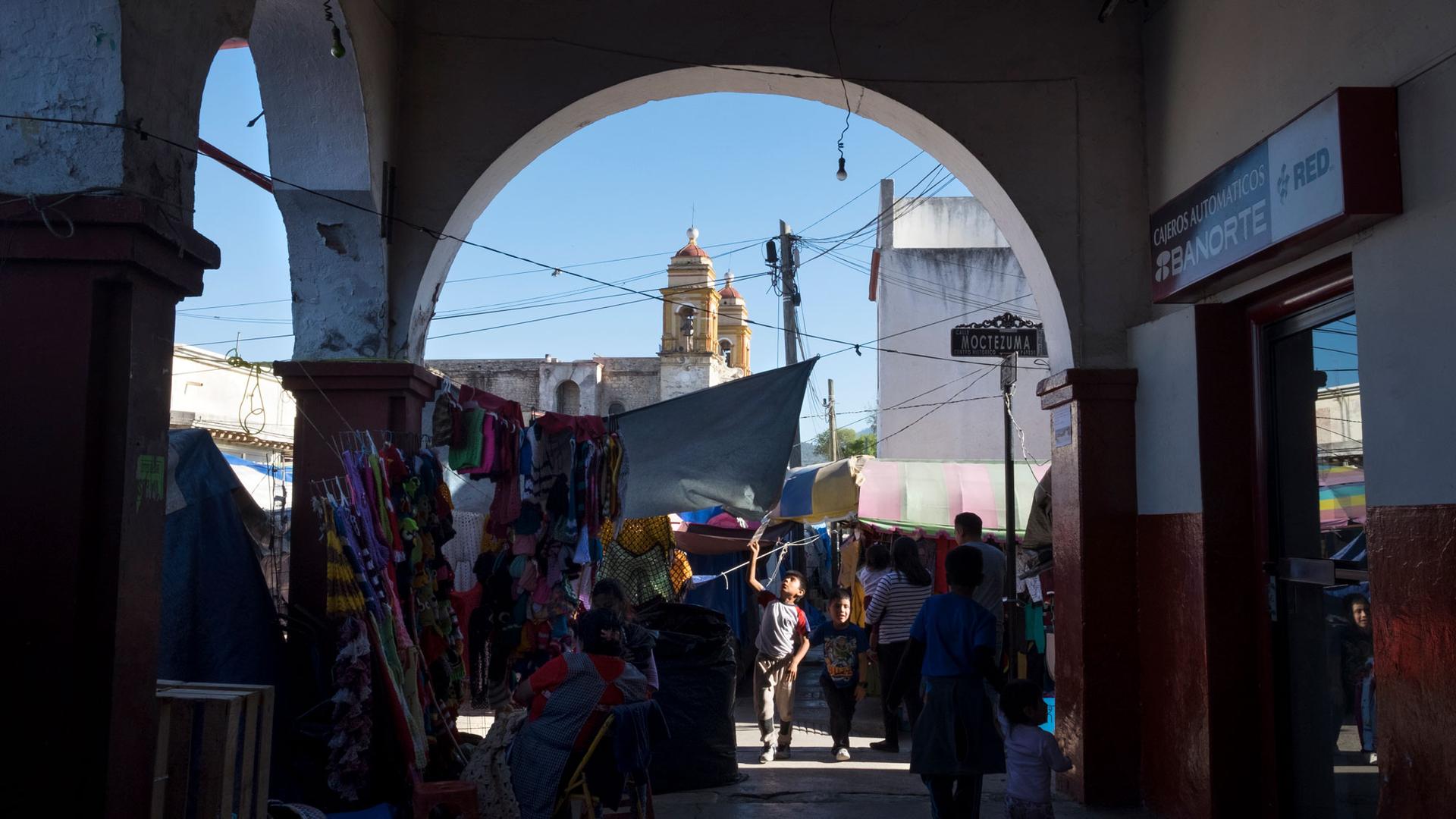Radio waves connect Mexicans in remote Tlaxiaco with family in the US
Tlaxiaco, Mexico. It’s a small city in the south of the country and in a region that has a long history of migration to the US. The economy there is driven by small businesses like those at this market.
Her voice cracking, Floriana Espinoza spoke tearfully into a microphone in Tlaxiaco, Mexico, a remote city hidden in the mountains. Her message was aimed at an audience some 2,500 miles away, in California, listening to the bi-national radio program known as “La Hora Mixteca.”
First in Spanish, and then in Triqui — an indigenous language spoken by around 30,000 people — Espinoza told listeners she was looking for news of her son, Heriberto, who moved to California 11 years earlier and with whom she had lost touch with last March. She gave her telephone number and asked anyone with any information to reach out.
“I don’t know where he is working, or where he is,” she said. “I can’t be like this.”
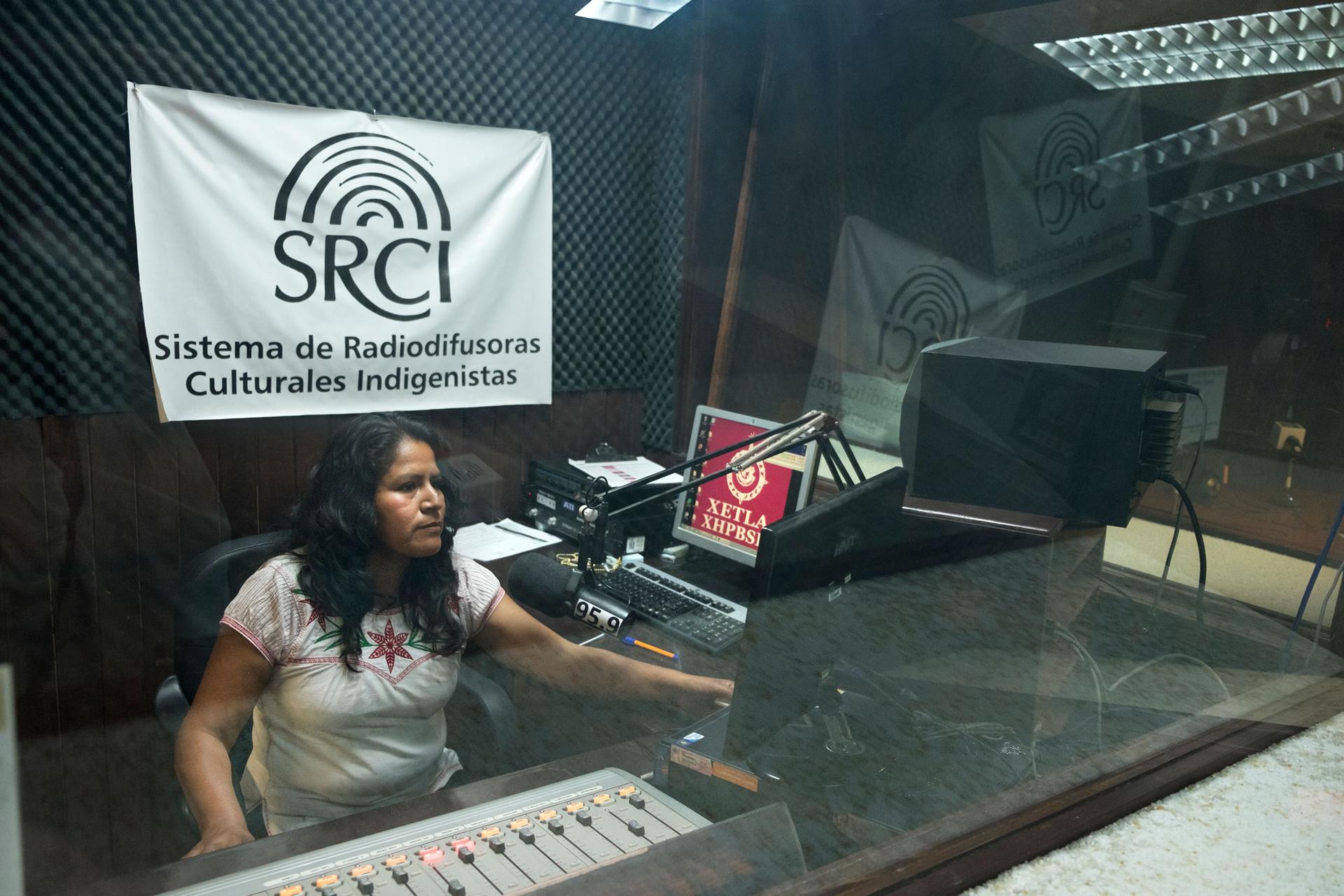
Tlaxiaco has been inundated with international attention in recent months because it’s the hometown of Yalitza Aparicio, the star of the movie Roma, who emerged from obscurity to become an Oscar nominee. (Aparicio’s father is Mixtec and her mother is Triqui.) But Tlaxiaco is already well known in Fresno, California, and other cities throughout the US because of decades of migration from this region of Mexico.
Related: Yalitza Aparicio: ‘I grew up always proud of who I am’
Those ties are fortified by La Hora Mixteca, or The Mixtec Hour, which airs every Sunday in Tlaxiaco, San Quintin, Baja California, and in areas throughout the US with significant Mixteco populations, including Fresno, Californina; Woodburn, Oregon; and Mt. Vernon, Washington. It serves as a link between families and friends separated by immigration. The program is also a lifeline for family members who have lost contact and are looking for their loved ones.
“It’s a program that brings families and friends closer — those that are in the US and those that are here,” said Eva Hernández, who has served as the program’s Tlaxiaco-based host since it started airing here 14 years ago. “It’s as if we were in a market and you run into your friend, or your brother, but in this case it’s just through voices as opposed to physical encounters.”
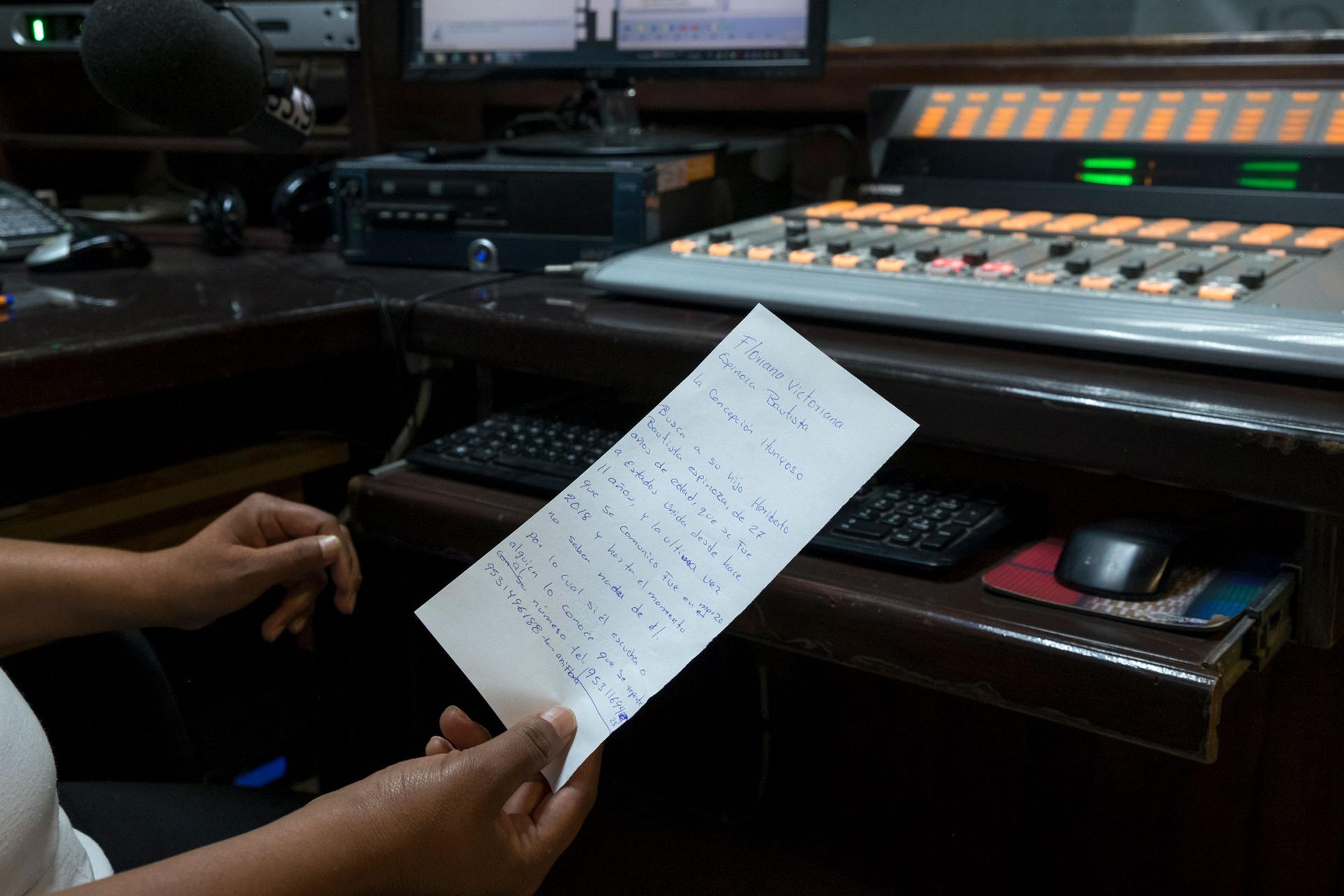
The show has successfully reunited families. But not all stories turn out happily. Some people find out their relatives have been killed or are in prison in the US. In the past four years, around 4,000 migrants have died or gone missing en route to the US, according to an Associated Press investigation. Many were victims of violence related to drug trafficking and organized crime. Still, even bad news can provide closure.
Related: Photos: Welcome to Tlaxiaco, the small Mexican city where ‘Roma’ star Yalitza Aparicio grew up
La Hora Mixteca started in 1991 as a production of Radio Bilingüe in Fresno, California, the only national Latino public radio network in the United States. It began airing in Tlaxiaco in 2005 and proved a hit. Now, around 20,000 people in the United States tune in every week — about 15,000 of them in the Central Valley, according to Maria Eraña, Radio Bilingüe’s director of broadcasting.
It’s harder to say how many people listen in Tlaxiaco, although the show airs on one of the region’s only radio stations. The radio station also airs a second bi-national program in conjunction with a host from Arkansas that dispenses practical advice and information for immigrants living in the US and well as for those planning to make the journey.
Since the 1950s, there has been steady migration from Oaxaca to the United States, initially because of the Bracero Program, which brought Mexican farmers to work seasonally in American fields, and over time as soil erosion has made it harder for people from the region to farm their ancestral farmland. As of 2011, around 150,000 indigenous people from Oaxaca were living in California, and comprised around 20 percent of the agricultural workforce. The Mixteco population has also expanded across the US, with significant populations in Wisconsin and Florida.
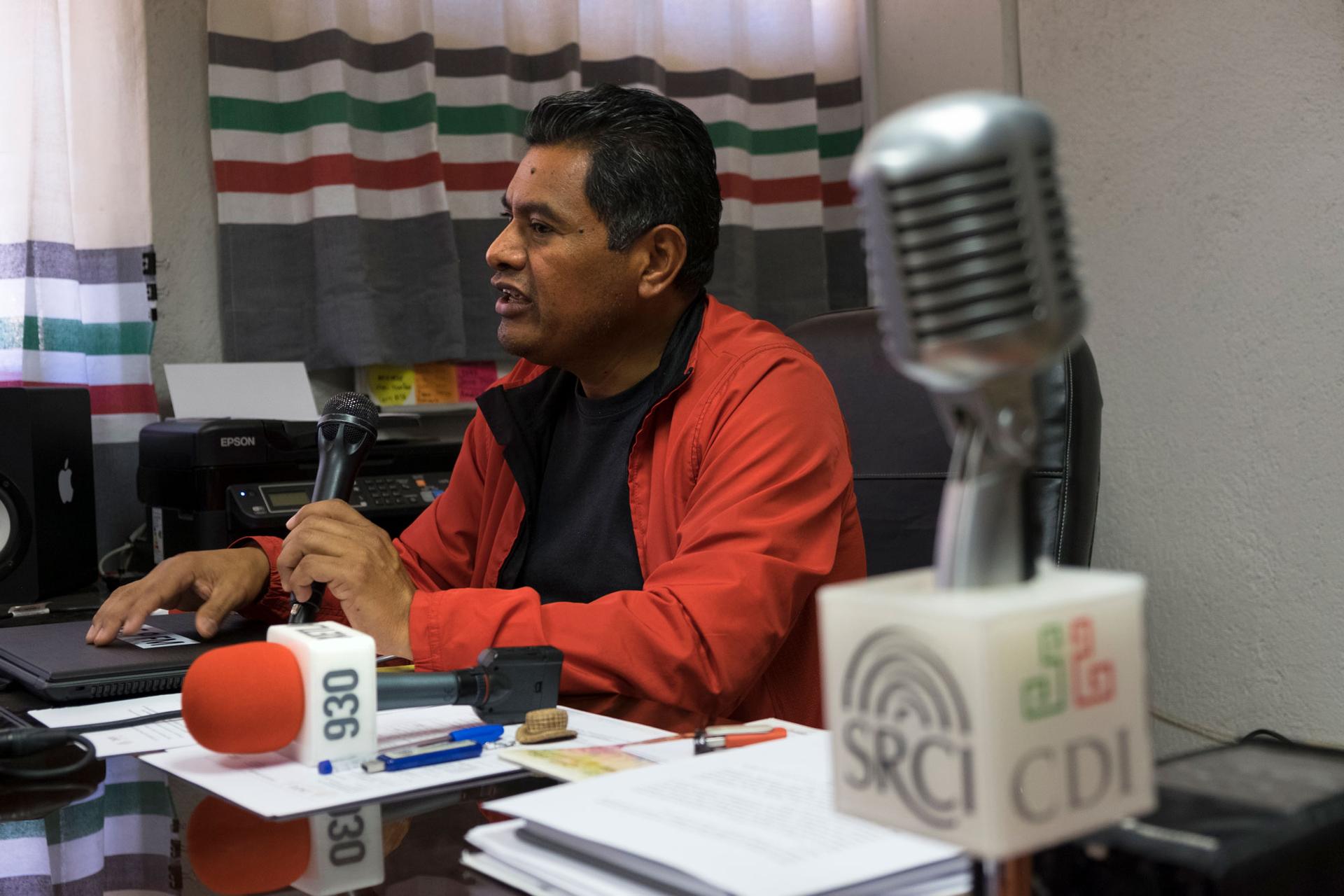
In Tlaxiaco, those migratory forces can be felt in a visceral way. Virtually everyone has a family member who lives in the US, or they themselves once lived in the US. There are signs of that influence throughout the city, including a pizza restaurant, Juanna’s Ristorante, founded by two brothers who worked in New Jersey as chefs and returned to Tlaxiaco.
The hosts of La Hora Mixteca alternate between Spanish and Mixtec as they discuss everything from the health risks of pesticides to legal protections for migrant workers and how to become a US citizen. Those discussions are interspersed with listeners sending greetings to relatives on both sides of the border, and music typical of the Mixteca region.
“Through La Hora Mixteca, we can discuss issues in our own language, with our way of seeing and understanding the world,” said Natalia Bautista, one of the program’s volunteer hosts in Fresno.
Bautista’s story is common in this region of California: She was born near Tlaxiaco and migrated to the US 18 years ago in search of better opportunities. She’s now raising her children in the Central Coast, and is anxious that they retain their cultural identity and language despite their US upbringing.
“There are not spaces where our language is spoken — everything is in English or Spanish,” said Bautista, whose mother language is Mixtec. She added that speaking the indigenous languages is critical to maintaining the identity of the Oaxacan people.
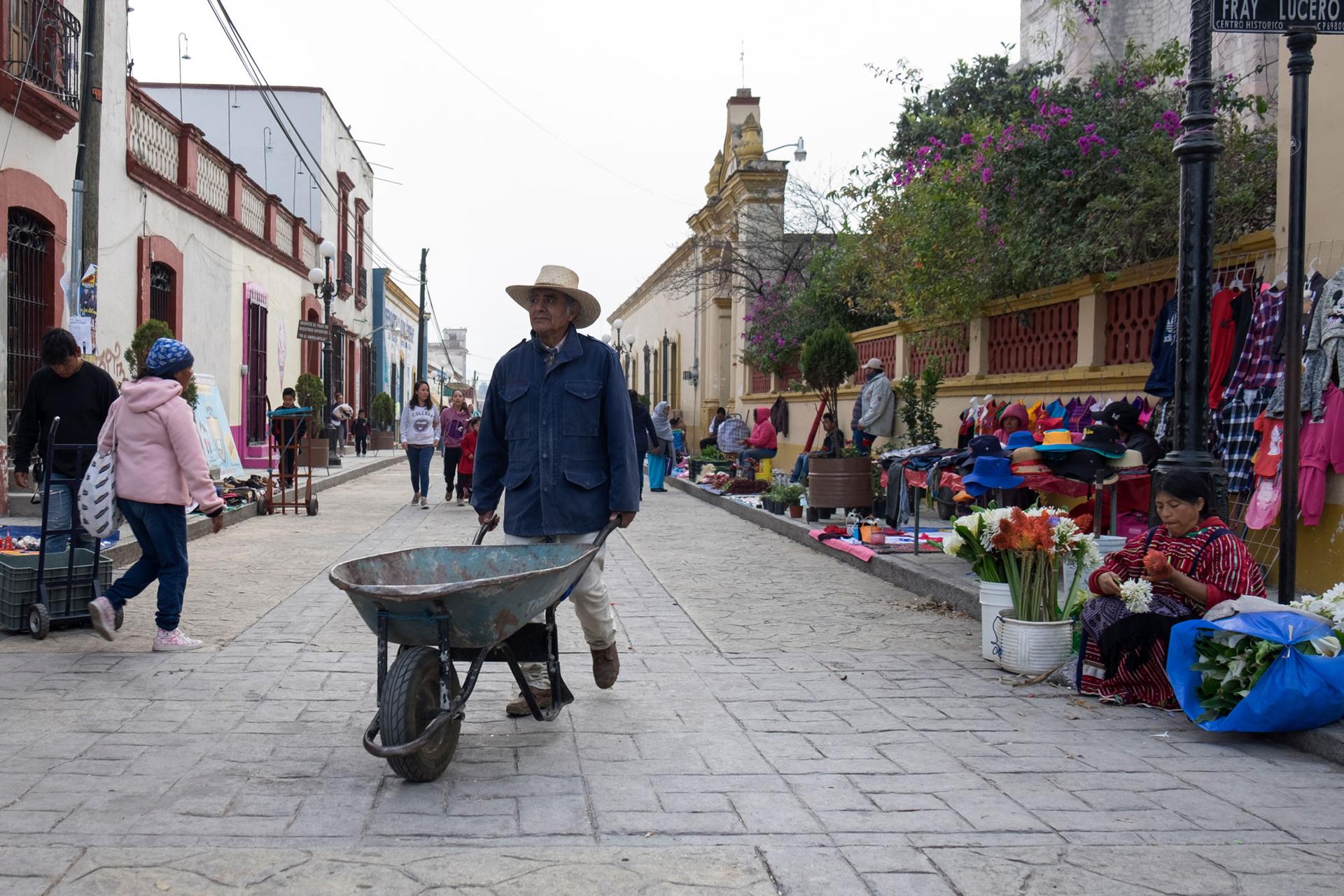
Indigenous languages have disappeared in recent generations because they were often forbidden from being spoken in schools in Mexico, and parents were reluctant to teach them to their children because speaking an indigenous language was associated with discrimination.
Like many people from Tlaxiaco, Hernández is tired of outsiders asking her about “Yalitza,” as she’s known here. Even with the Academy Awards ceremony set to take place Sunday, the city is surprisingly bereft of publicity for “Roma” or Yalitza.
Related: Yalitza Aparicio challenges stereotypes in debut role in ‘Roma’
But Hernandez appreciates that the movie star speaks Mixtec in “Roma” — and that in doing so she has created renewed interest and desire to speak indigenous languages. (Mixtec is a broad term for more than 50 related language dialects). Even Yalitza didn’t speak Mixtec before the film and had to memorize the lines for the part.
“Now, even people who don’t want to teach their kids, they are thinking twice about that decision,” Hernández said.
Emily Green reported from Tlaxiaco, Mexico.
